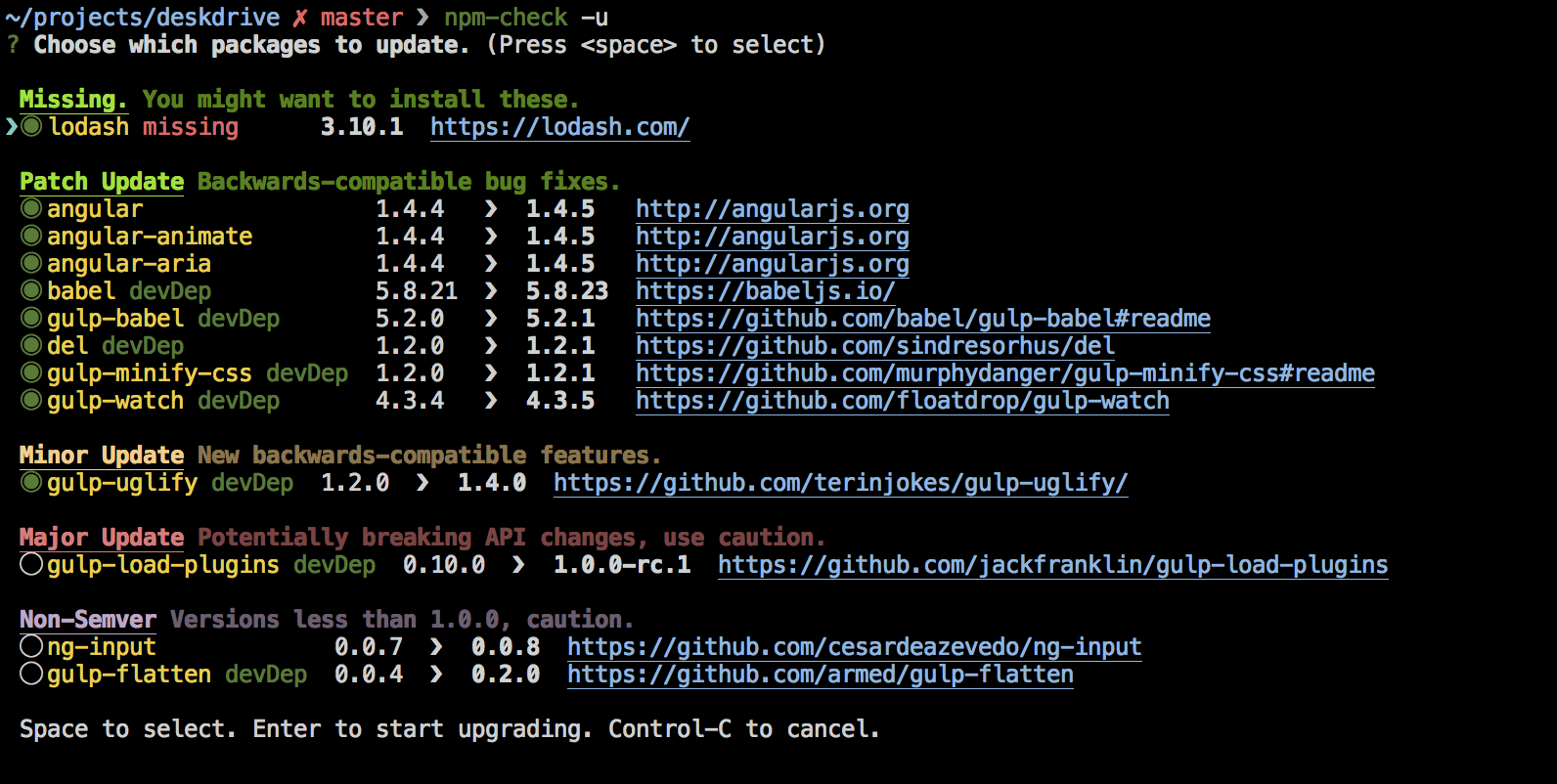

Your framework will provide a command line interface (CLI) that lets you create a new project with a single command. Now, let’s say you are developing a new project and you are using NPM to find and manage your packages. Unfortunately, it also introduced a number of challenges regarding versioning and dependency management. Since its release, Node Package Manager (NPM) has become the de facto standard for distributing most Javascript projects, from servers to frontend frameworks and overall, it has vastly simplified developers lives. If you know of a great resource you’d like to share or notice a broken link, please let us know.The challenge with NPM versioning I’ll try to keep this list current and up to date. Let me know if this helps you to clarify. Hopefully you enjoyed this article and will inspire you to explore more useful JavaScript libraries in npmjs. Okay, do let me know in the comments below if you have any questions/concerns and I would be happy to help in any way. Commit it and push it so that other dev members can leverage it.Run unit tests and any other necessary tests to ensure getting the latest packages does not break your code/project.(This command will honour the ^ and ~ symbol and update the packages to its latest that is provided by the library author(s)). Simply run npm install as in default, it checks if your directory has package-lock.json file otherwise, it will create one for you.Delete your package-lock.json file in the root directory of your project,.

These are all the steps that you need to follow, It is actually very easy to update the package-lock.json file in order to honour the ^ and ~ symbol. If you came here with those reason in mind, read on, this post will give you steps on how to update the package-lock.json file. There are many reasons why you want to update the package-lock.json file, few reason we can think of is, fix vulnerabilities, update library to keep the project up to update, update library to use the new feature provided by the library. A popular build pipeline is Azure DevOps.

Package-lock.json file is useful when multiple people are collaborating on the same project and wanting all the dev members to have similar environment (in this case, similar library versioning across all their packages and its dependencies) as the lock file is simply a snapshot of the dependencies tree graph. In case you have no idea what ^ and ~ symbol mean in package.json file, please take a look at this blog post that I did.


 0 kommentar(er)
0 kommentar(er)
